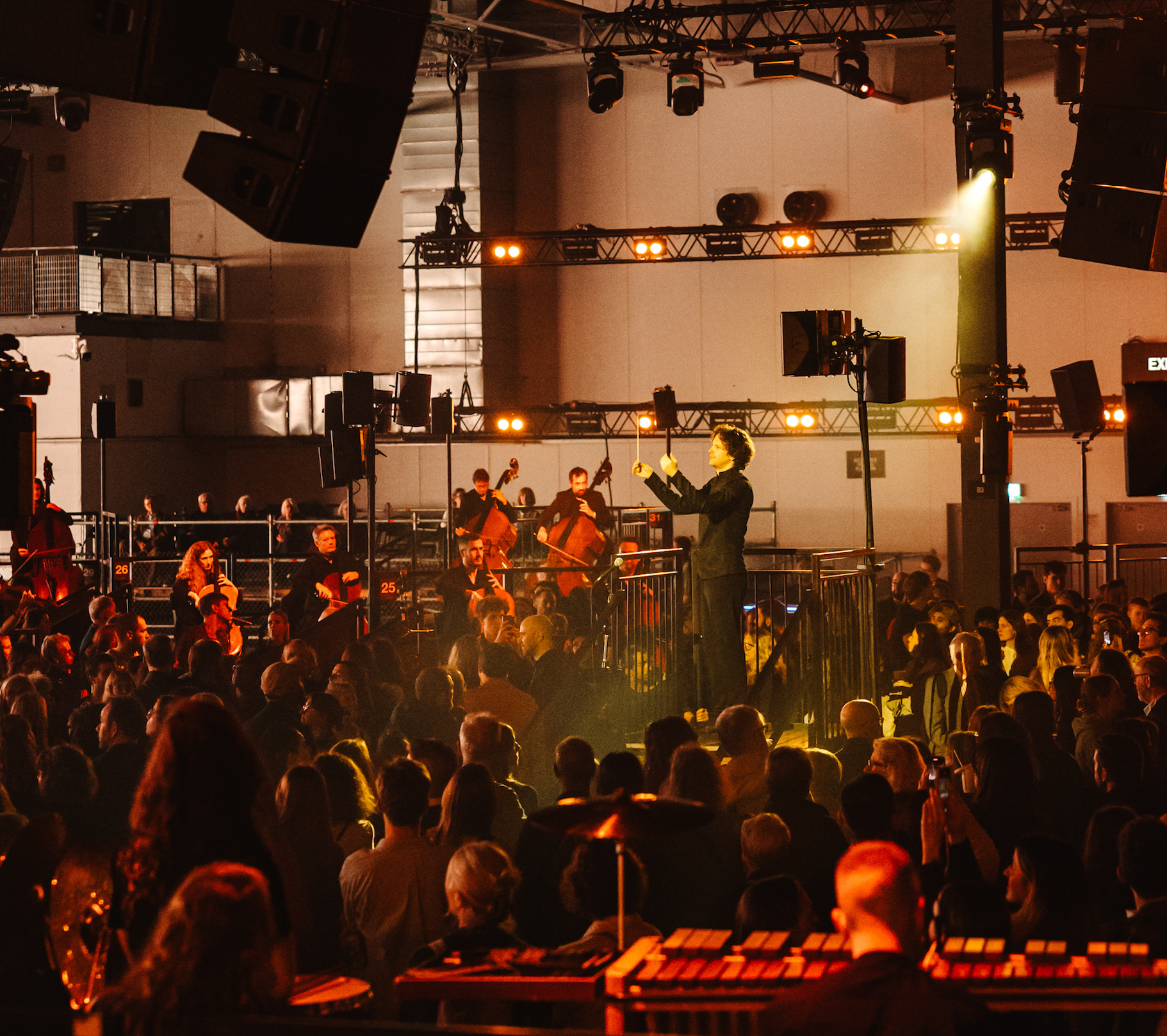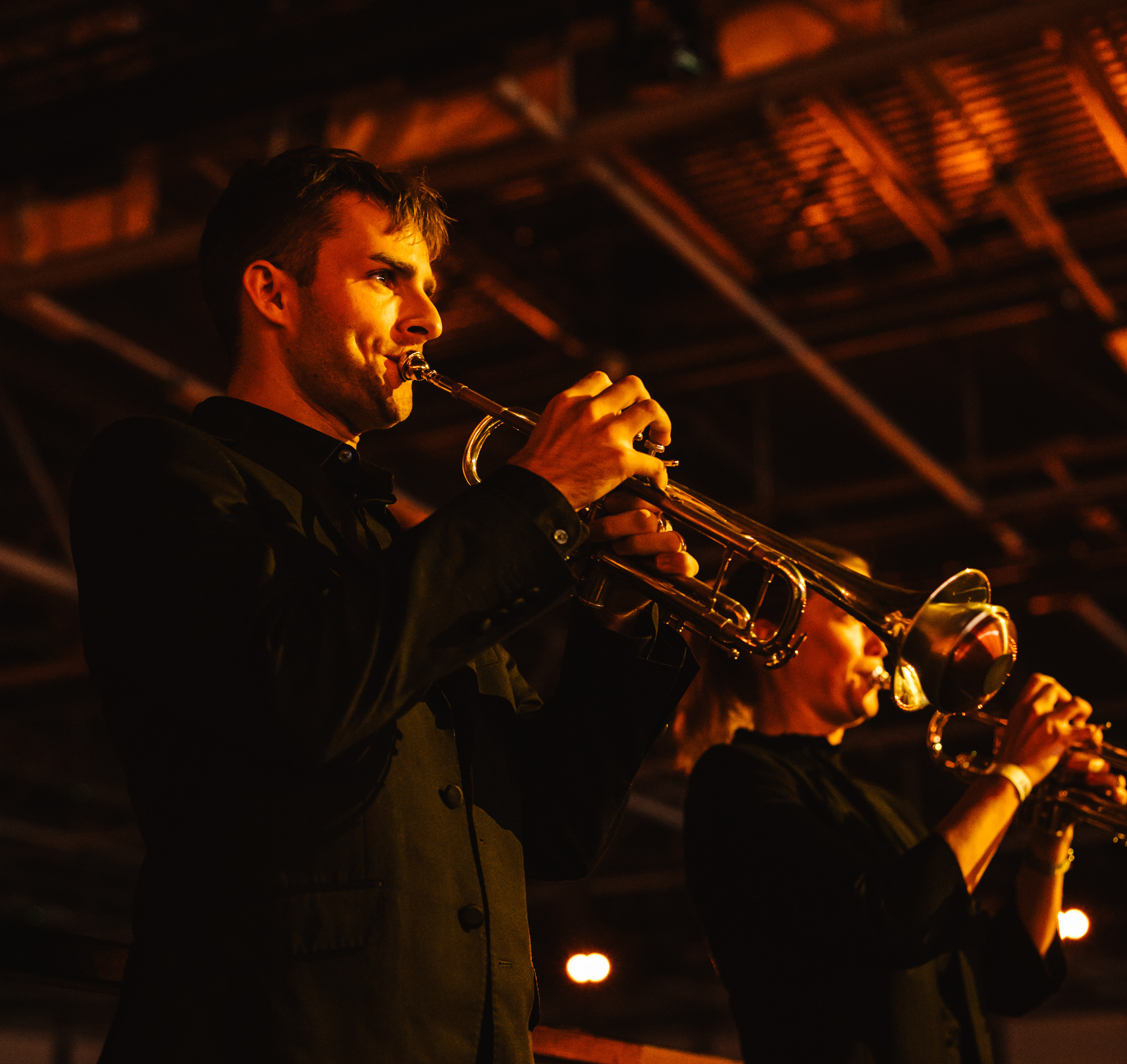Every lover of folk-tales knows that the seeker has to endure dangers and setbacks before they finally win the prize. Last night, the ever-enterprising Aurora Orchestra played The Firebird – Stravinsky’s own musical vision of the intrepid hero who outwits the forces of darkness – on a unique site that presents an audience with its own kind of ordeals. Once the Tottenham IKEA, Drumsheds has undergone a metamorphosis from super-store to super-club.
Set in a wilderness of concrete lots and wire fences, across a roaring highway, the big blue terminal-sized shed now offers 608,000 square feet of Berlin-style dance and performance space, with a 15,000 maximum capacity: Berghain comes to London N18. Grim chic it has to spare. In mega-club fashion, you queue between the wires for a body search at a forbidding control point that stands comparison with border crossings in conflict zones (and I’ve seen a few). Inside, the low-lit labyrinth of vast industrial spaces overawe and disorientate. All part of the joys of clubbing, of course. Drumsheds has comprehensively undomesticated IKEA into a sort of cavernous metal-heavy underworld. As an exercise in the techno-sublime, it’s tremendously effective. But as a classical venue?  For an orchestral concert, the perilous quest fosters the hope – and the need – for some spectacular reward at journey’s end. By and large Nicholas Collon and the (as usual) scoreless and standing Aurora players delivered – both in the Firebird and their farewell flourish, Ravel’s Bolero. In the club’s enormous central room, Collon conducted from an elevated platform. Spread all around him, on separate raised “desks”, pairs of musicians fanned out in a circle two or (in the case of the strings) three layers deep. Each desk was individually miked but centrally (and discreetly) mixed: contrary to expectations, the volume never shot off the scale.
For an orchestral concert, the perilous quest fosters the hope – and the need – for some spectacular reward at journey’s end. By and large Nicholas Collon and the (as usual) scoreless and standing Aurora players delivered – both in the Firebird and their farewell flourish, Ravel’s Bolero. In the club’s enormous central room, Collon conducted from an elevated platform. Spread all around him, on separate raised “desks”, pairs of musicians fanned out in a circle two or (in the case of the strings) three layers deep. Each desk was individually miked but centrally (and discreetly) mixed: contrary to expectations, the volume never shot off the scale.
That in-the-round layout, making good use of Drumsheds’ huge interior plain, allowed audience members to promenade at will around the orchestra. A more crowded space would have impeded truly free movement; here, the numbers felt just right. In The Firebird, you could wander among the successive soloists as different instruments took up the themes of the mystic bird, hopeful prince, ensnared princess or wicked wizard-king. We listened, and watched, close-up from within the orchestra, not just on one spot but roving among as many as we chose.
Poised and unflappable, the Aurora players coped serenely with the milling herd all around them. And that extreme proximity only induced respect, even awe, for the skill on show at every turn. I especially enjoyed the flute duo of Jane Mitchell and Rebecca Larsen, along with Amy Harman’s unearthly bassoon and Fergus McCready’s plangent oboe – but each point on this sonic compass-rose had its shining moments.
The promenade setting meant that Collon, on his tower (pictured above), needed to keep a firm hand on the seething activity below. He led decisively and the players, for all the ambient distractions, crisply and tightly followed. In the spotlit gloom, with uncanny melodies bursting from one nearby or faraway thicket then another, the clubbing floor turned into an enchanted forest. And we were suitably bewitched. I had feared an elaborate gimmick, and the preliminary fuss of the entrance ritual soon lost its charm. But music, site and layout did combine to cast a spell. In fact, it was the smart deployment of these wide open spaces – rather than the epic post-industrial design – that really facilitated the special magic of listening from inside the orchestra. That surround-sound experience if anything intensified in Bolero. We could (literally) follow the tune around the orchestra from raised desk to raised desk after Henry Baldwin’s snare drum set off on the first – out of 169 – of its hypnotic grooves. Collon wittily introduced the performance. Indeed, the show’s immersive immediacy and informality would surely have made it a hit for schoolkids: a DIY young person’s guide to the orchestra, with no dull sitting-down required.
In fact, it was the smart deployment of these wide open spaces – rather than the epic post-industrial design – that really facilitated the special magic of listening from inside the orchestra. That surround-sound experience if anything intensified in Bolero. We could (literally) follow the tune around the orchestra from raised desk to raised desk after Henry Baldwin’s snare drum set off on the first – out of 169 – of its hypnotic grooves. Collon wittily introduced the performance. Indeed, the show’s immersive immediacy and informality would surely have made it a hit for schoolkids: a DIY young person’s guide to the orchestra, with no dull sitting-down required.
This time, I found myself enjoying the trumpet pair of Imogen Whitehead and Will Thomas (pictured above), but we couldn’t (quite) listen from every place at once; other standpoints would have yielded other pleasures. And, of course, there’s a particular aptness about rolling this piece, with its tapestry of mesmeric iterations, through a gigantic warehouse club more accustomed to trance or techno beats. Next time, some Steve Reich or Philip Glass maybe?














Add comment